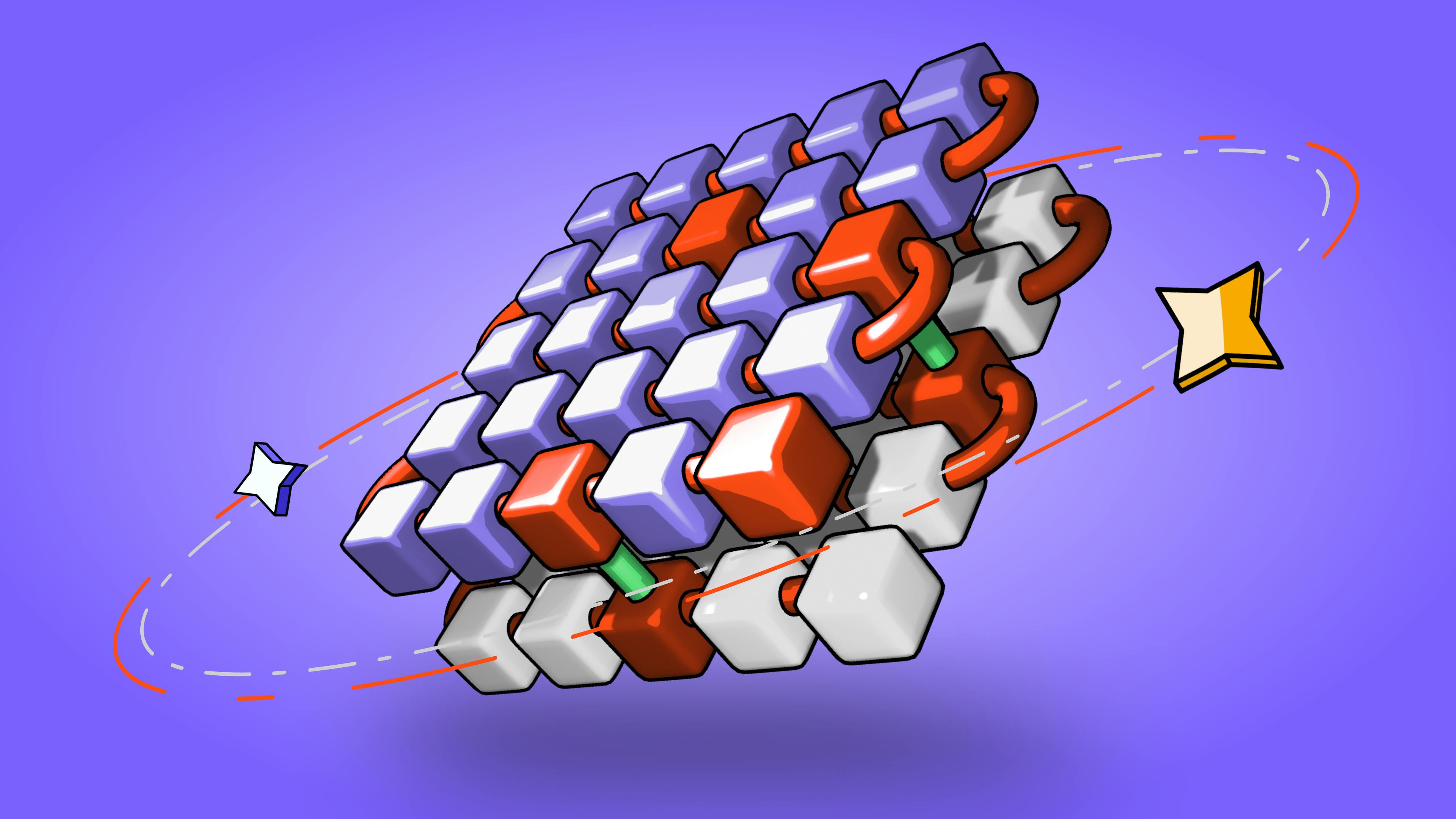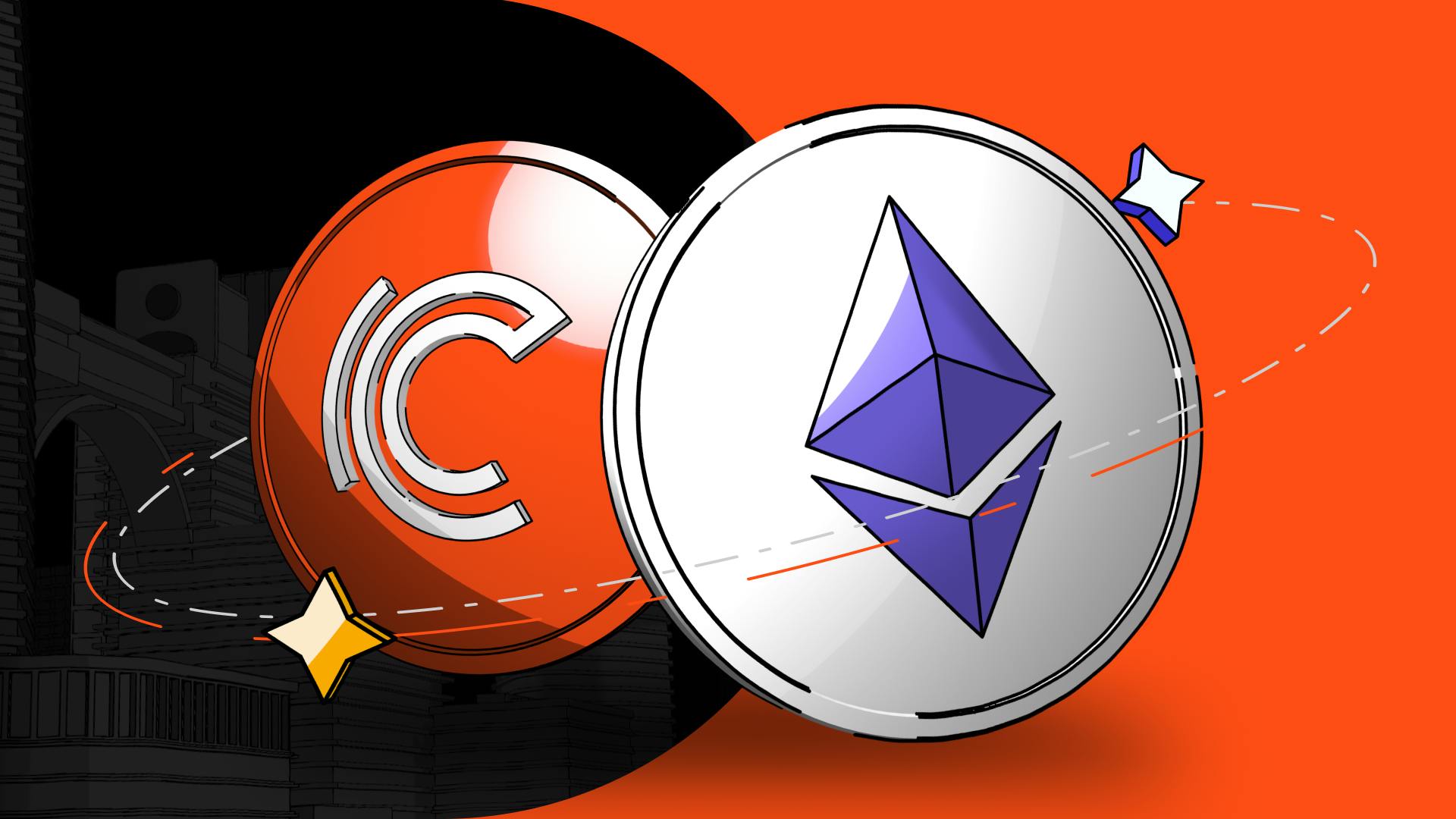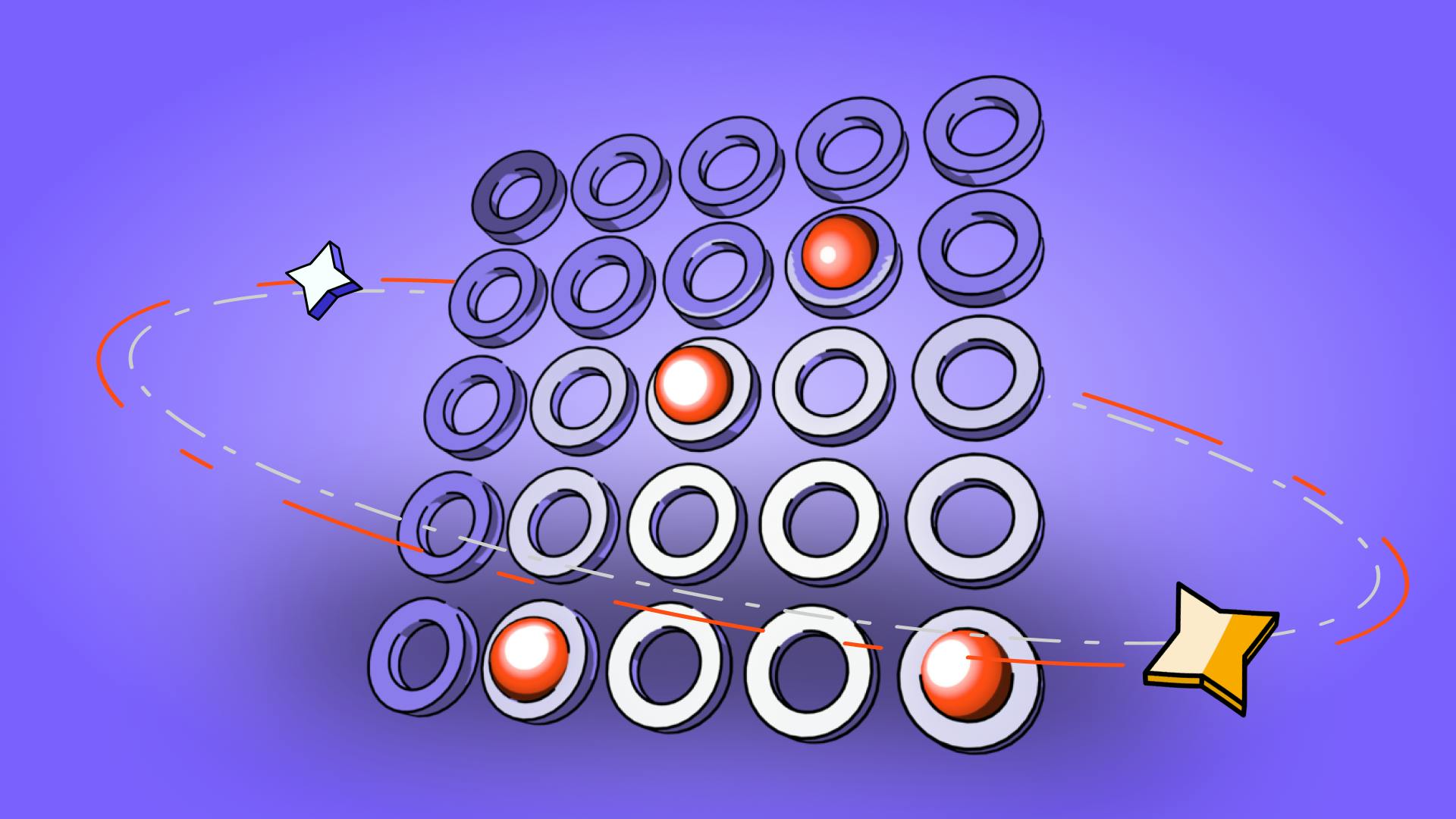Exploring Layer-2 Scaling Solutions
5 de diciembre de 2025

by Kamil S
5 de diciembre de 2025
Blockchain technology has revolutionized various industries, offering decentralized and secure transactions, or otherwise, offering automation of trust. However, as adoption grows, blockchain scalability becomes a crucial challenge. Major networks like Bitcoin (BTC) and Ethereum (ETH) face limitations in handling increasing transaction volumes. To address this issue, Layer-2 scaling solutions have emerged as promising alternatives, aiming to alleviate network congestion and reduce transaction fees by securely moving some transactions off-chain or to sidechains.
Looking back in time, we can trace discussions about off-chain scalability for Bitcoin to the early days of Satoshi Nakamoto and Hal Finney. As early as November 2008, Hal Finney showed a forward-thinking approach, contemplating future scalability challenges and potential solutions.
Bitcoin's early adopters were well aware that the block size limit might pose scalability concerns in the future. However, they also recognized the significance of keeping the block size small to ensure widespread distribution of network nodes. A smaller block size was crucial in maintaining accessibility, as it allowed Bitcoin to run on a broader range of devices while keeping hardware costs and network throughput in check.
The foresight displayed by Hal Finney and other pioneers demonstrates their commitment to addressing scalability challenges while upholding the decentralized and distributed nature of the Bitcoin network, and blockchain technology at large. By envisioning potential solutions early on, they laid the foundation for future discussions on improving Bitcoin's scalability while preserving its essential attributes.
In this blog, we explore the concept of blockchain scalability and the impact of Layer-2 solutions like the Lightning Network, Arbitrum, Optimism and others, on scaling two of the biggest blockchains - Bitcoin and Ethereum.
Blockchain scalability refers to a network's ability to efficiently handle a growing number of transactions. Scalability is crucial for preventing network congestion and maintaining low transaction fees, especially as cryptocurrencies gain popularity. Established Layer-1 blockchains, such as Bitcoin and Ethereum, rely on a single layer for transaction validation and consensus. However, this design has limitations in terms of transaction speed and throughput.
Layer-2 scaling solutions like the Lightning Network, Arbitrum, Optimism, Polygon, and others play a significant role in addressing the limitations of current Layer-1 blockchains. These solutions enable faster and more cost-effective transactions, making cryptocurrencies more practical for everyday use and facilitating real-world applications. Embracing Layer-2 solutions is a crucial step toward achieving a scalable, efficient, and user-friendly blockchain ecosystem, paving the way for the future of decentralized finance and beyond.
Despite their immense popularity and revolutionary potential, leading blockchain networks like Bitcoin (BTC) and Ethereum (ETH) grapple with significant scalability challenges at the Layer-1 level. As the demand for decentralized applications (dApps) and cryptocurrency transactions grows, the limitations of these Layer-1 solutions become increasingly apparent. In this context, it becomes essential to understand the current issues faced by BTC and ETH in terms of transaction speed, throughput, and fees. Exploring these challenges will shed light on the need for scalable solutions and the ongoing efforts to enhance the performance of these pioneering blockchain platforms.
Bitcoin, as the first and most widely adopted cryptocurrency, faces scalability challenges. With an average block time of 10 minutes, BTC can process only a limited number of transactions per second (TPS). Furthermore, the limited block size of 1MB in the Bitcoin network poses another hurdle to scalability. As transaction demand increases, the block size constraint restricts the number of transactions that can be included in each block, resulting in a backlog of unconfirmed transactions during periods of high activity. Consequently, users may experience delays in transaction processing and may need to pay higher transaction fees to have their transactions prioritized by miners.
The combination of longer block times and limited block size creates a "scalability trilemma" for Bitcoin. The trilemma suggests that a blockchain network can only prioritize two out of three attributes: decentralization, security, and scalability. Bitcoin has chosen to prioritize decentralization and security, which are essential for maintaining the network's integrity and resistance to censorship. However, this comes at the expense of scalability, as the current design makes it challenging to achieve a higher TPS without compromising other fundamental aspects of the network.
To address these scalability challenges, the Bitcoin community has been exploring various solutions, including the implementation of Segregated Witness (SegWit) and the adoption of the Lightning Network. SegWit enables the separation of transaction signatures from the transaction data, effectively increasing the block capacity and reducing transaction fees. On the other hand, the Lightning Network introduces an off-chain layer for instantaneous, low-cost transactions by creating payment channels between users. These Layer-2 solutions aim to alleviate the burden on the main blockchain, improve scalability, and make microtransactions more feasible on the Bitcoin network.
As the prominent smart contract platform, Ethereum also experiences scalability issues. The block time of around 15 seconds and the gas limit constraint contribute to network congestion and higher transaction costs during periods of high activity. This impedes its scalability and hinders its ability to accommodate more users and decentralized applications (dApps).
Moreover, the gas limit constraint poses another scalability obstacle for Ethereum. Gas is the unit used to measure the computational effort required to execute transactions and smart contracts on the Ethereum network. Each block has a gas limit, which restricts the total amount of computation that can be processed within that block. As the demand for decentralized applications grows, some complex and resource-intensive smart contracts may exceed the gas limit, causing them to be split into multiple transactions or even be unable to execute entirely.
These scalability challenges have sparked a considerable effort within the Ethereum community to explore potential solutions and upgrades. The recent Ethereum 2.0 upgrade transitioned Ethereum from PoW to Proof-of-Stake (PoS) consensus, significantly improving scalability and energy efficiency. PoS allows validators to create new blocks and secure the network by staking their Ether ETH holdings, reducing the need for energy-intensive mining.
Furthermore, Layer-2 scaling solutions, such as Arbitrum (ARB), Optimism (OP), and Polygon (MATIC), have been developed to address Ethereum's scalability limitations. These solutions aim to process transactions off-chain or in sidechains, thereby reducing the burden on the main Ethereum blockchain and increasing its transaction throughput.
Layer-2 solutions are off-chain protocols designed to enhance the scalability of Layer-1 blockchains. Unlike Layer-1, which processes every transaction directly on the main blockchain, Layer-2 operates off-chain or on sidechains, allowing for faster and more cost-effective transactions. These solutions aim to alleviate network congestion and reduce transaction fees while maintaining the security and decentralization offered by the underlying Layer-1 blockchain.
Layer-2 scaling solutions play a vital role in addressing the scalability trilemma faced by most blockchain networks. As previously mentioned, the scalability trilemma suggests that a blockchain can prioritize only two out of three characteristics: decentralization, security, and scalability. Layer-2 solutions strike a balance between these attributes, enabling blockchain networks to achieve higher transaction throughput without compromising security or decentralization.
The significance of Layer-2 becomes even more apparent as blockchain technology reaches broader adoption. As transaction volumes increase and decentralized applications become more prevalent, the limitations of Layer-1 blockchains become more evident. Layer-2 solutions offer a practical and efficient way to handle a growing user base, making blockchain technology more accessible and suitable for real-world applications.

There are various types of Layer-2 scaling solutions for Bitcoin, Ethereum, and other blockchains as well, but the common goal is to move some transactions off-chain, reducing the burden on the main blockchain. Let's explore some of the prominent Layer-2 networks: the Lightning Network - for Bitcoin, and Arbitrum (ARB), Optimism (OP), and Polygon (MATIC) for Ethereum.
The Lightning Network is a Layer-2 solution designed specifically for Bitcoin. It operates through a network of payment channels that allow users to transact with each other off-chain. Here's how it works: When two parties open a payment channel, they create a private, off-chain ledger where they can carry out multiple transactions instantly and with minimal fees. Only the opening and closing of the channel are recorded on the Bitcoin blockchain, rather than each individual transaction. This streamlined process not only enhances Bitcoin's scalability but also enables near-instantaneous, low-cost payments, making microtransactions and everyday use of Bitcoin more practical than ever before. The Lightning Network's efficiency marks a pivotal advancement in Layer-2 scaling solutions, propelling the Bitcoin ecosystem toward a more scalable and user-friendly future.
The Lightning Network is an open-source protocol that was conceptualized and developed by Joseph Poon and Thaddeus Dryja in 2015. Joseph Poon is a prominent figure in the cryptocurrency space, known for his contributions to the development of blockchain scalability. Thaddeus Dryja, a computer scientist at the digital currency initiative lab at MIT, has also been actively involved in the research and development of innovative blockchain solutions.
The Lightning Network's development gained significant attention and support from the broader Bitcoin community, leading to its successful implementation and deployment. Today, a global community of developers, researchers, and enthusiasts continues to contribute to the growth and improvement of the Lightning Network. This decentralized and collaborative approach to development ensures that the Lightning Network remains secure, robust, and adaptable to the evolving needs of the blockchain ecosystem.
Arbitrum (ARB) is a Layer-2 scaling solution designed to address the scalability challenges faced by Ethereum. As one of the leading Layer-2 solutions, Arbitrum plays a crucial role in enhancing Ethereum's transaction throughput and reducing network congestion.
Created by Offchain Labs, Arbitrum achieves scalability by utilizing a technology known as optimistic rollups. This technique allows for the off-chain processing of transactions, significantly increasing the number of transactions that can be executed within a given time frame. By moving some computations off-chain and only settling the final results on the Ethereum mainnet, Arbitrum minimizes the burden on the Layer-1 blockchain, leading to faster and more cost-effective transactions.
One of Arbitrum's key features is its compatibility with existing Ethereum smart contracts. Developers can seamlessly port their decentralized applications (dApps) from Ethereum to Arbitrum without requiring significant modifications to the code. This unique characteristic makes Arbitrum an attractive option for dApp developers looking to enhance their application's performance and user experience.
Operating in a similar fashion to Arbitrum, Optimism (OP) has gained recognition as one of the most promising Layer-2 solutions for Ethereum. By utilizing optimistic rollups, the network enables off-chain processing of transactions, bundling multiple operations into a single rollup, and submitting only the essential data to the Ethereum mainnet. This approach significantly reduces the on-chain load and congestion, resulting in faster and cheaper transactions for users.
One of the key strengths of Optimism lies in its compatibility with existing Ethereum applications. Developers do not need to undertake extensive reconfigurations to deploy their dApps on Optimism. This seamless integration fosters the growth of decentralized ecosystems, attracting developers and users alike.
Overall, Optimism's ability to improve Ethereum's scalability, lower transaction costs, and maintain compatibility with existing infrastructure make it a standout Layer-2 solution. As the Ethereum ecosystem continues to expand, Optimism's impact on the network's efficiency and user experience is likely to solidify its position as one of the best Layer-2 solutions available.
Polygon achieves scalability through its innovative Plasma framework and a hybrid Proof-of-Stake (PoS) consensus mechanism. By employing sidechains, also known as "Polygon chains," transactions are moved off the congested Ethereum mainnet, significantly reducing network load and gas costs. This approach enables Polygon to process transactions more efficiently and at a fraction of the cost compared to using the mainnet directly.
One of the main advantages of Polygon is its seamless compatibility with existing Ethereum smart contracts. Similarly to Arbitrum and Optimism, developers can easily migrate their dApps to Polygon, leveraging the same tools and infrastructure they are familiar with on Ethereum. This feature encourages widespread adoption, attracting developers and projects seeking cost-effective and faster transaction processing.
Additionally, Polygon's PoS consensus mechanism ensures a high level of security while maintaining fast block times. Validators on the network are incentivized to act honestly through staking MATIC tokens, enhancing the protocol's resilience and integrity.
However, the Polygon network plans to soon upgrade to zkEVM Validium - a powerful solution that combines the benefits of zkRollups and Validium. With zkRollups, many transactions can be bundled and verified as a single proof on the mainchain, reducing processing time and costs. Validium (a data availability solution) keeps data off-chain for privacy but can be brought on-chain for verification. By merging these techniques, Polygon will achieve better scalability without compromising security, making transactions faster, cheaper, and more private for all users.
Blockchain scalability is a critical factor in ensuring the efficiency and widespread adoption of cryptocurrencies. As the technology continues to evolve, the significance of Layer-2 solutions becomes even more apparent. Simply put, Layer-2 solutions offer an innovative approach to enhance transaction speed and reduce fees while maintaining the decentralized nature of blockchain networks. By allowing some transactions to occur off-chain, these solutions alleviate network congestion and enable faster, more cost-effective transactions. This accessibility and scalability are crucial for the widespread use of cryptocurrencies in real-world applications, solidifying their position as a viable alternative to traditional financial systems.
The continued development and adoption of Layer-2 solutions will undoubtedly shape the landscape of the blockchain ecosystem, fostering an era of enhanced scalability and usability. Embracing these innovative solutions is vital for propelling blockchain technology toward broader adoption and making decentralized systems more practical and accessible to users worldwide.
The founding and development of the Lightning Network for Bitcoin, as well as Arbitrum, Optimism and Polygon, for Ethereum, demonstrate the collaborative effort within the cryptocurrency community to overcome scalability challenges. This dedication to creating open-source solutions is paving the way for the future of decentralized finance and blockchain technology.
Join the Coinmetro community on Discord and Telegram, where forward-thinking traders and investors gather to share insights, explore new opportunities, and dive deep into the world of cryptocurrencies. Should you need any help, feel free to reach out to our world-class Customer Support Team via 24/7 live chat or email at hello@coinmetro.com.
To become a Coinmetro user today, Sign Up now, or head to our new Exchange if you are already registered and experience our premium trading platform.
Etiquetas
Artículos relacionados

Blockchain en la educación: transformando el aprendizaje y la acreditación
¿Qué pasaría si tu expediente académico pudiera verificarse al instante, en cualquier lugar del mundo? Esta es solo una de las preguntas que reflejan…
7m

Cómo comprar Ethereum (ETH) en Coinmetro - paso a paso
¿Quieres comprar Ethereum al instante sin complicaciones? Coinmetro lo hace rápido, sencillo y seguro. Esta guía te muestra los pasos simples para…
3m

Cómo hacer staking de Ethereum (ETH) en Coinmetro de forma rápida, sencilla y segura
¿Quieres ganar ingresos pasivos con tu Ethereum? Con Coinmetro, hacer staking de ETH es un proceso fluido, seguro y fácil para principiantes. En esta…
3m

El papel de la cadena de bloques en la trazabilidad de la cadena de suministro
En 2021, un escándalo sacudió al sector alimentario. Varios proveedores habían etiquetado carne caducada como si fuera fresca. El resultado fue la…
11m